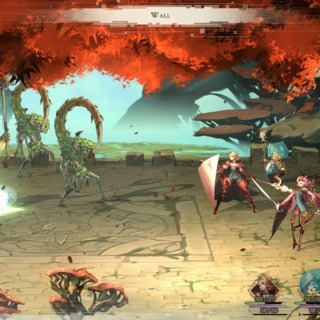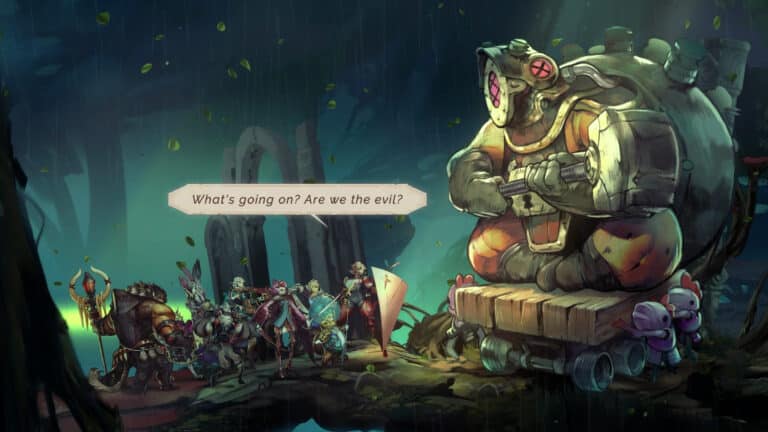
Then combat becomes a soul-sucking ordeal where you’re focusing and waiting for the one character in your party who can actually hit an enemy without a penalty to get their turn, while hoping the enemies don’t specifically target that character and KO them by spamming attacks they are weak to before you can act. In the early game, you have no choice but to carry whatever characters have the elements that random enemies are weak to. Eventually you can get new jobs for your characters, but at first they’re locked into one, with limited moves and elements.

You have eight characters, but you don’t really have a choice about who to include in your party when you enter a new area, especially early on. Manipulating enemy weaknesses is of paramount importance – perhaps too great an importance for just regular random encounters. Focus can also be lost by hitting an enemy with an element they can resist, nullify, or absorb. Focus points can be gained by manipulating an enemy’s weakness, landing a critical, or having a character spend a turn to charge a point. Things are spiced up by adding focus points, which work similarly to brave points in the Bravely Default series. Your characters and your enemies take turns taking their actions, whether it be attacking, healing, or buffing. I’d say I only gained the initiative one in every ten times I swiped my weapon at an enemy on the screen. Supposedly you can gain the initiative by slashing enemies before battle, but I never found a consistent way to activate that. Combat is initiated by coming into contact with an enemy unit on the level. The majority of combat is fairly standard for turn-based JRPGs.

Normally I can stand quite a bit of gibberish in JRPG world building, but Astria Ascending doesn’t offer much of anything else. You do get some small character developments for each character in their own segments of the game, but not nearly enough to endear the cast to players. But the main story boils down to a lot of inscrutable gobbledygook about Noises and Harmony, and the characters are so thinly developed I couldn’t really get into them, either. I really, really wanted to get into the game’s story. The 333 rd set off on a journey to investigate the Noises, and end up caught in a web of intrigue that threatens the foundations of the world. Noises have begun appearing inside cities where harmony is supposedly strong enough to keep the population safe. Astria Ascending follows the 333 rd group of demigods, three months before their time is up. The tradeoff is that the demigods will die three years after receiving their power. They receive great power to fight the Noises, monsters that disrupt harmony.

In that time, a group of eight heroes from all the world’s races have been selected to be elevated to demigod status. The world of Orcanon has been living in harmony for nearly a millennia – ever since the Goddess Yuno had her followers begin eating harmelon. It’s not that it’s outright bad, but it lacks anything of true interest beyond its stunning graphics – and as I’ll get to later, on the Switch the game even finds a way to mute my enthusiasm for that. Unfortunately, I can’t think of a game in recent memory that was more of a letdown than Astria Ascending.

When the wait was finally over and Astria Ascending was finally in my hands, I settled in and got ready to sink more time than is probably healthy into what should have been my newest obsession. A gorgeously hand-drawn, Valkyrie Profile-styled JRPG developed and scored by some of the luminaries of the genre? You can assume I’ll be ready to give that a try anytime, anywhere. Published By: Dear Villagers, Plug-In DigitalĬomposer: Hitoshi Sakimoto, Mitsuhiro Kaneda, Yoshimi Kudo, Rikako Watanabe, Yukinori Kikuchi, Denys Fontarossaįrom the first screenshot I saw, I was hooked on the idea of Astria Ascending.


 0 kommentar(er)
0 kommentar(er)
